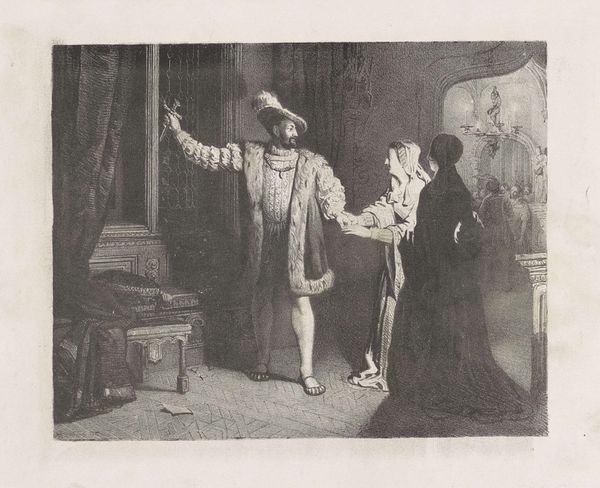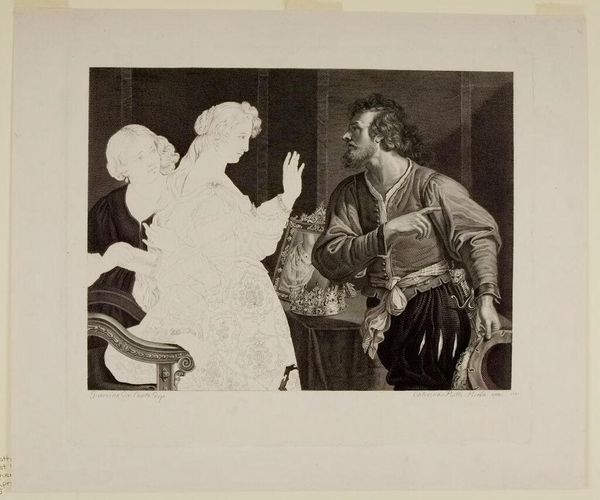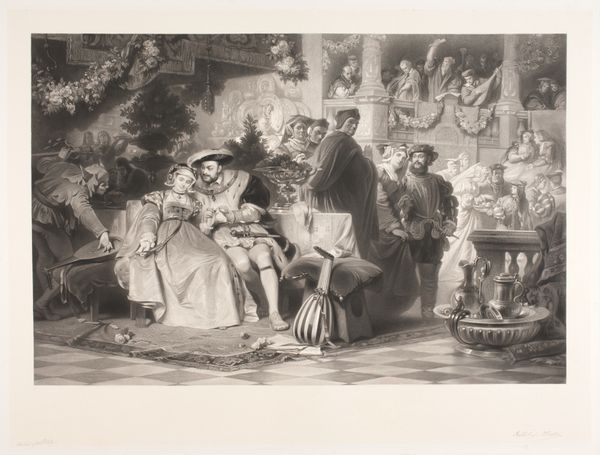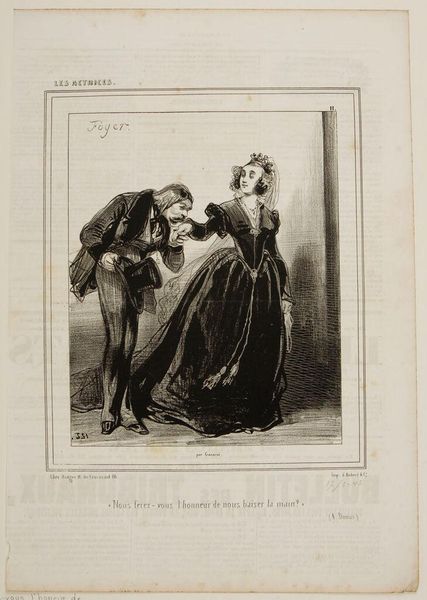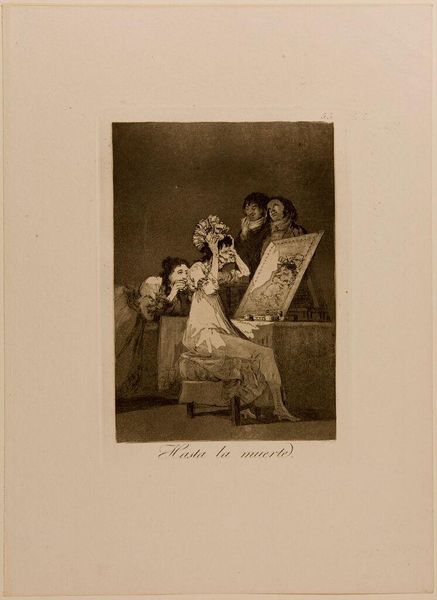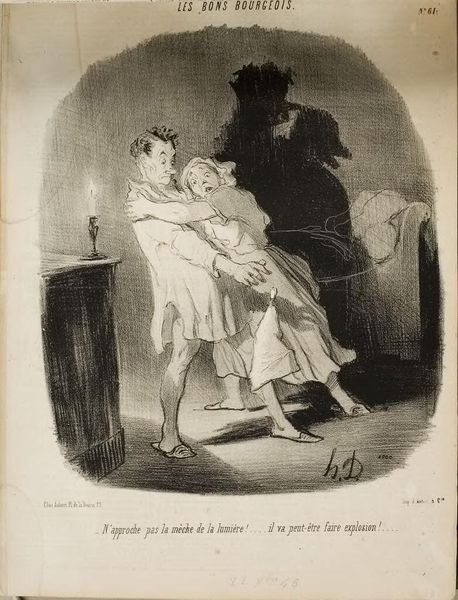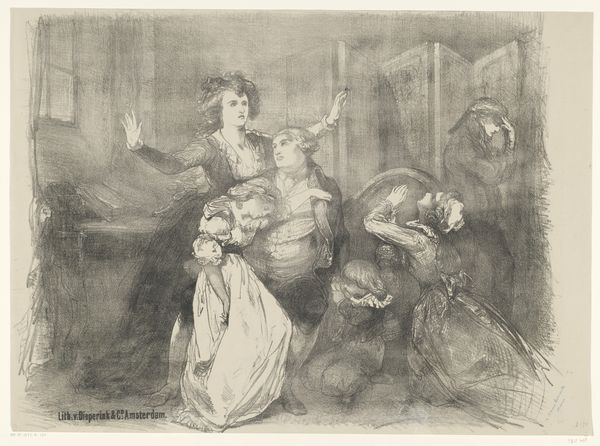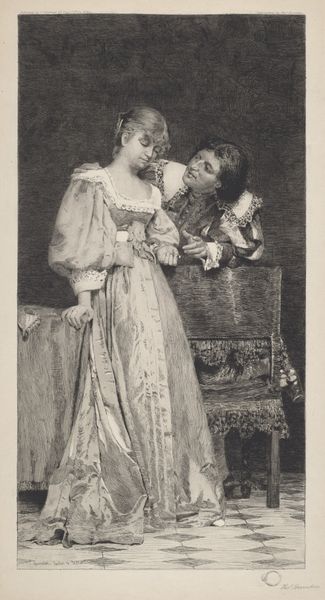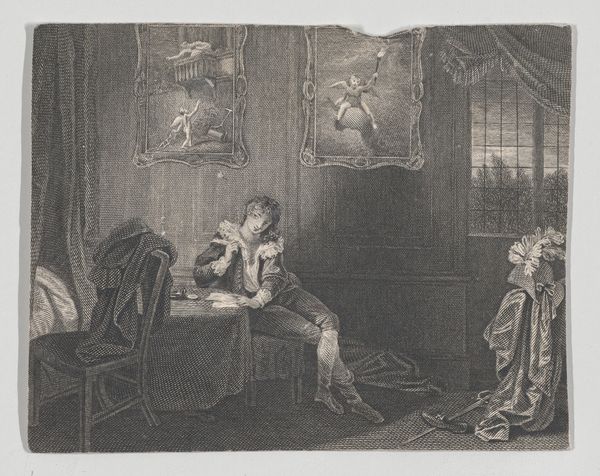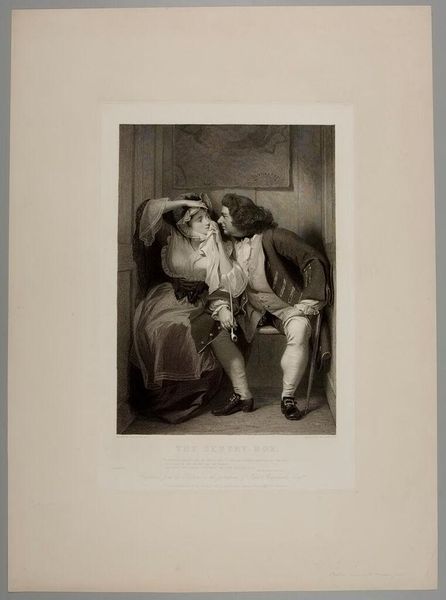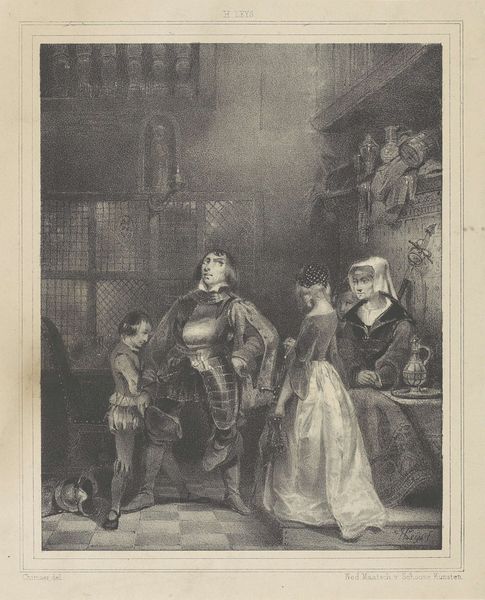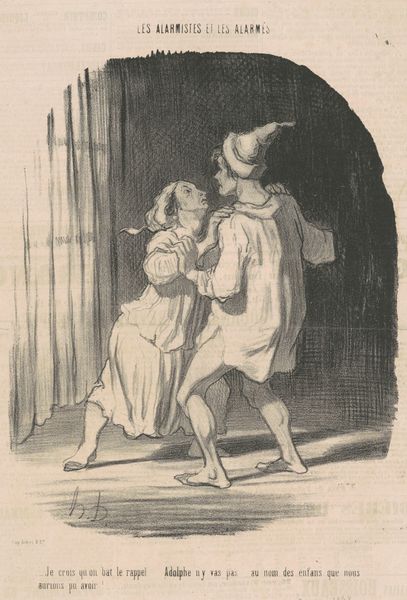
Karl I af England tager i fængslet afsked med sine børn 1838
0:00
0:00
canvas
#
black and white photography
#
street shot
#
black and white format
#
monochrome colours
#
b w
#
canvas
#
black and white theme
#
black and white
#
monochrome photography
#
street photography
#
monochrome
Dimensions: 104 cm (height) x 87 cm (width) (Netto)
Curator: I'm struck by the pathos of this scene. There's an overwhelming sense of sorrow and finality hanging in the air, would you agree? Editor: Indeed. Here we have "Karl I af England tager i fængslet afsked med sine børn" ("Charles I of England Taking Leave of His Children in Prison"), painted on canvas in 1838. The monochromatic palette definitely amplifies that somber mood, doesn't it? What can you tell me about the materiality of it? Curator: Well, consider that this canvas, likely commercially produced, would have been primed, stretched, and then layered with pigment. The choice to limit the palette simplifies the process, making it quicker. We might think of this in contrast to, say, academic painting of the period which had more varied application techniques. It's a powerful economy of means. Editor: And that economy enhances the raw emotion, fitting when considering the political and personal tragedy depicted here. Charles's reign, his absolutist tendencies, ultimately led to civil war and his execution in 1649. This image captures him in captivity, bidding farewell to his children – a scene laden with loss and questions of legacy. Curator: The social implications are significant, aren't they? We're looking at the spectacle of fallen power and also, perhaps, a challenge to the very notion of divine right. In material terms, though, the artist engages a visual rhetoric designed to manufacture compassion within the viewer. This canvas facilitates the exchange of sympathy. Editor: Exactly, and who were the consumers of that compassion? The rising bourgeois class perhaps? Did this image reinforce monarchist sentiment, or did it act as a cautionary tale regarding abuses of power? Those reception questions matter deeply when analyzing artwork so bound to socio-political upheaval. Curator: Definitely food for thought. One element that I notice again and again when looking at paintings of this time period is the effect of light; the almost photographic representation reminds one of paintings' mimetic effect. It feels true, in a weird sense of the word. Editor: It all makes you think about what artistic choices produce meaning beyond the narrative itself. Curator: Indeed. It shows you how even tragedy can become, if not art, a study for what will one day be art. Editor: A fascinating blend of the personal, political, and, of course, the process behind its construction!
Comments
No comments
Be the first to comment and join the conversation on the ultimate creative platform.
